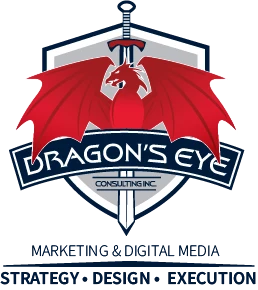The versatility of pay-per-click (PPC) advertising serves multiple objectives, from enhancing visibility and generating new leads to boosting website traffic and conversions. Ultimately, businesses start their PPC campaign with one overarching goal: growth. Although PPC campaigns are straightforward to implement, they demand thoughtful planning and preparation. Here’s how to create pay-per-click advertising in St. Catharines, Hamilton that works for your business growth.
Starting with Your Website
Before you even think about launching your PPC campaign, take a critical look at your landing pages. The connection between your ads and the landing pages is crucial because if a user clicks on your ad, they expect to find more information relevant to what the ad promised. If they land on a page that doesn’t match the ad’s promise or is unrelated, chances are they’ll leave your site immediately.
To ensure your landing pages are up to scratch, they need to be optimized for performance. This means fast loading times, easy navigation, and no technical issues. Furthermore, your landing pages should have clear calls to action, utilize a clean design, feature compelling headlines, and include strategic use of video and images. All these elements should work together to keep the visitor engaged and encourage them to take action.
Choosing a Bidding Strategy
Selecting the right bidding strategy is crucial and depends on your budget, PPC experience, and campaign goals. You have two main paths: manual bidding, which is great for beginners and those with tight budgets, and automated bidding, which saves time but might cost more. Various automated bidding strategies are available, each tailored to different goals such as increasing conversions, visibility, or traffic.
Setting Your Budget
PPC advertising is adaptable to any budget size. Even with a modest amount like $25, you can kick off your campaign. Calculating your budget involves considering the profit you make per conversion and determining what portion of that profit you’re willing to allocate to your PPC efforts. You should also look into past data or industry standards to estimate your conversion rate, which will help you set a realistic budget.
Conducting Keyword Research
Keyword research is the backbone of your PPC campaign. The right keywords can make or break your campaign’s success. To choose effectively, consider what your competitors are using, think from a customer’s perspective, use keyword research tools, and prefer specific over generic keywords. Incorporating local keywords and identifying negative keywords to exclude unwanted searches can further refine your strategy.
Crafting Your Ad
With your foundation laid, it’s time to create your ad. Keep it concise and focused on your goal. Your ad should highlight what makes your offer unique and directly benefit the customer. Also, crafting a compelling call to action (CTA) is critical. The CTA guides prospects on what to do next, making it a non-negotiable element of your ad.
Testing and Refinement
Launching your ads is just the beginning. Continuously monitor their performance, conduct A/B tests to compare different versions, and refine your approach based on the results. This ongoing process ensures your campaign remains effective and cost-efficient.
Contact Dragon’s Eye Consulting for Pay-Per-Click Advertising in St. Catharines, Hamilton: Your Comprehensive Guide to a Successful PPC Campaign
Launching a successful PPC campaign involves more than just setting it up and hoping for the best. You need meticulous planning, continuous optimization, and regular testing. If you’re looking for expertise in crafting and managing PPC campaigns that deliver results, contact Dragon’s Eye Consulting for pay-per-click advertising in St. Catharines, Hamilton. Our team creates targeted PPC strategies that drive growth and achieve your business objectives.
